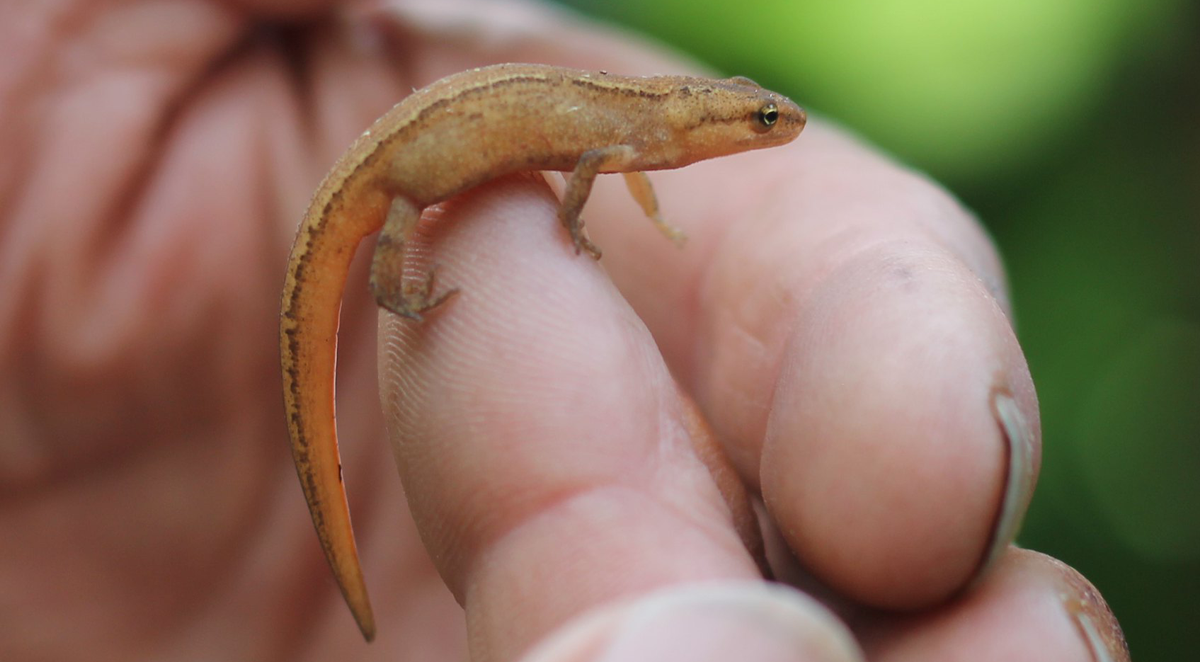Half a million ponds have been lost over the last 100 years in the UK and one in five remaining ponds are thought to be in poor condition. The Wildlife Trail pond is the only one on the whole Parkland Walk nature reserve.
Within days of it being filled (by the London Fire Brigade in Hornsey) we began to see signs of visits by foxes. Dragonflies and Damselflies soon investigated and it was visited by ducks in its first year.
We built this pond and top it up with rainwater (stored in two large tanks) which is collected from the roof of one of our neighbours on Shepherd’s Close.
Common or Smooth newt
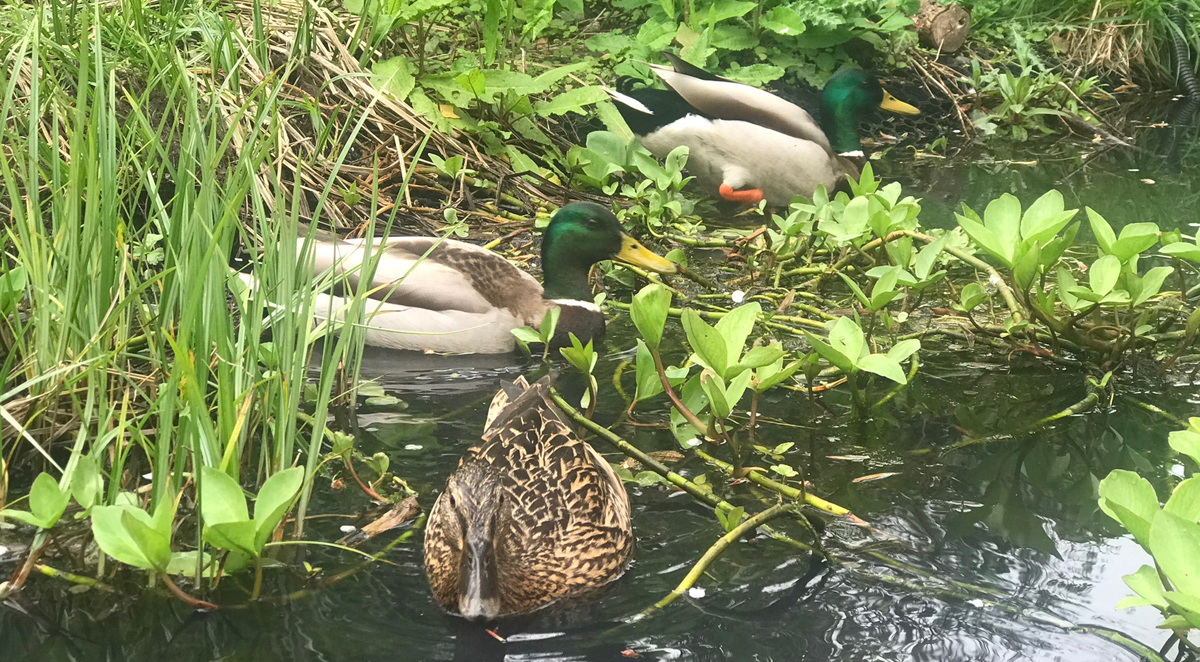
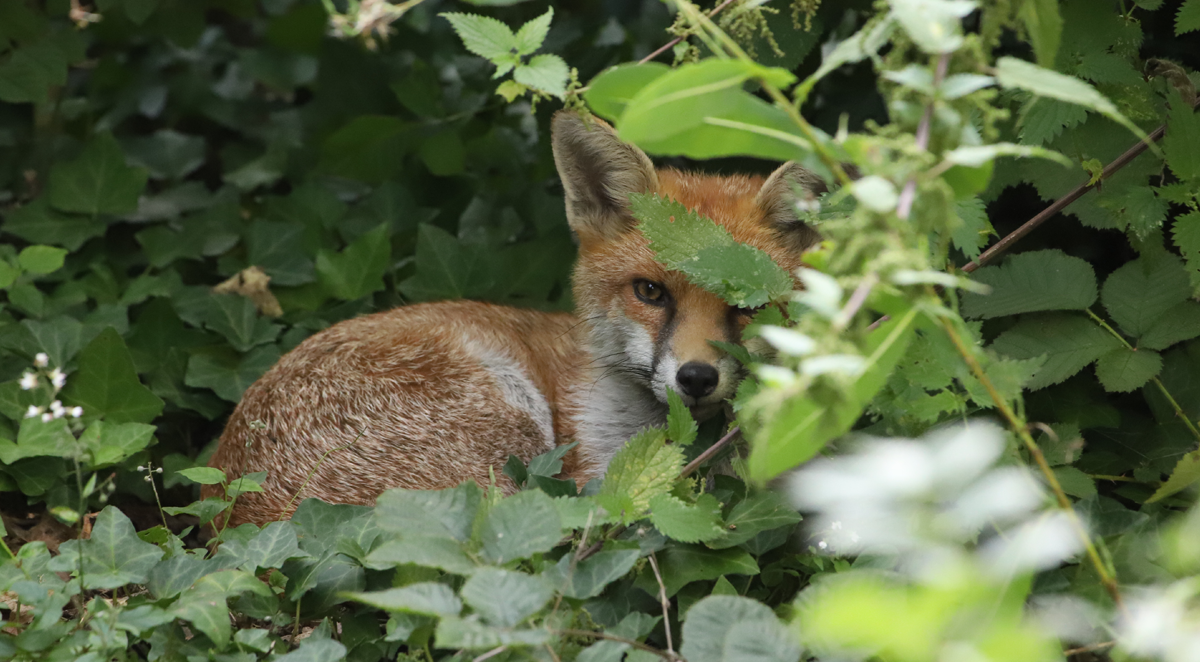
Pond insects such as Water boatmen, Pond skaters and snails established very early on and frogs spawned in its second year. There was a good batch of dragonfly nymphs hatching in year three. We first noticed newts in year four. There’s no doubt that the pond is a key stimulus for biodiversity regeneration and it’s hoped that we will be able to establish similar projects on other suitable sites on the Parkland Walk.
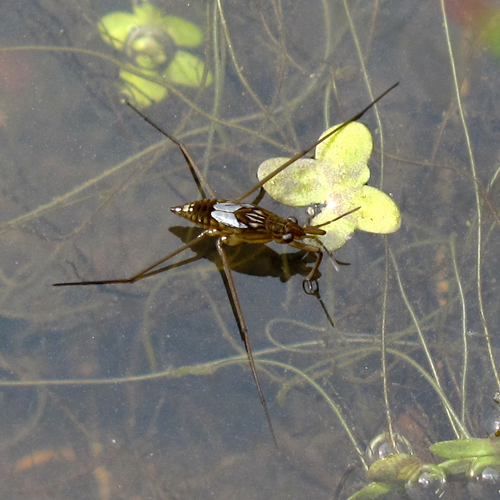
Pondskater
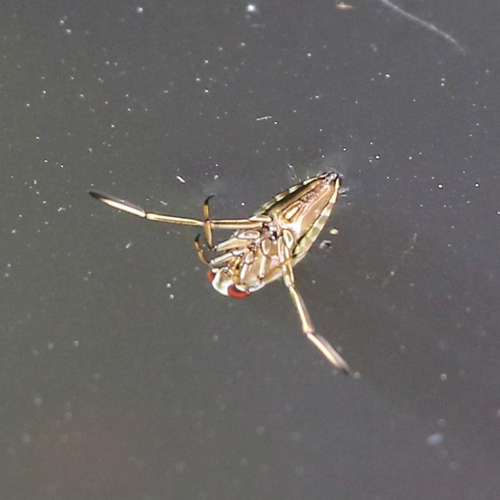
Backswimmer
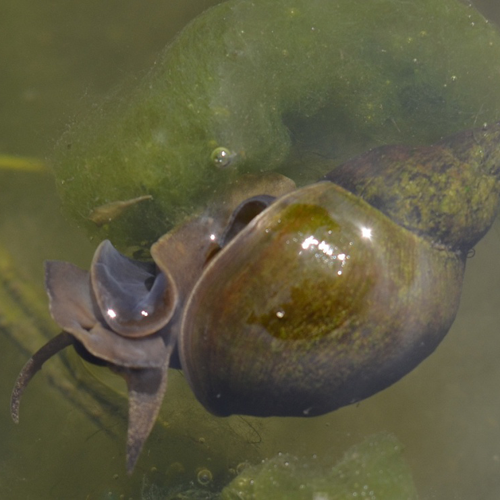
Pond snail

Leech
A sustainable freshwater pond
Placing a pond in the trail site was a challenge given there was no natural source of water. To get around this problem we worked closely with one of our neighbours on Shepherds Close to create a sustainable water supply by collecting rainwater via their roof guttering and routing it 50 metres by pipe to two storage tanks. In prolonged dry periods we can manually release water from the tanks. Sometimes even that isn’t enough and we have to let the pond level drop, but this is not unusual for ponds in the real world. We are working closely with engineers assigned to designing the new bridge over Stanhope Road to establish a similar pond system as part of the new landscaping. In that instance the intention is to achieve pond levels automatically via a cistern releasing stored water that has drained from the bridge surface.

Common frog
